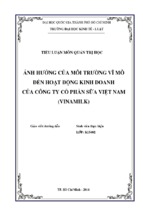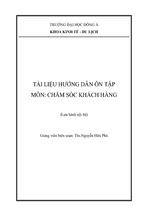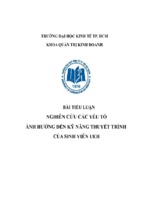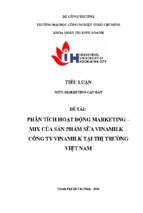238
INSTITUTIONAL SUPPORT
Plan for Stewardship before Solicitation
The Internet plays an even greater added-value role concerning stewardship. A corporation generous enough to make an investment in an institution deserves a stewardship program equal to the aggressiveness and effectiveness the organization displayed
while soliciting and realizing the gift. Fortunately, the capacity to provide comprehensive stewardship reports to donors is unparalleled in fundraising history. For example, an organization can efficiently provide corporate funders with monthly summaries
of campaign progress, program successes, and other reinforcing documentation.
Ongoing personalized and customized communication allows the corporate donor
to be engaged in a dialogue that can lead to the next funding opportunity.
While the Internet’s access and communication tools allow for effective, quick, and
easy exchanges of ideas and an opportunity for an institution to set itself apart from
the competition, stewardship is a strategy yet untilled by many funded charities.
Finding Foundation Information
Although the 1990s represents the strongest period of foundation support in history,
more and more foundations are narrowing the focus of their funding and looking for
ways to create greater impact with their dollars, therefore increasing challenges to
charities. The Internet creates an illusion that readily available information about a
foundation’s guidelines and application procedures are all that you need to secure a
grant. It is important to note that the fastest growing sector of foundations is family
foundations and charitable gift funds. In many ways these types of foundations require
a strategy more aligned to personal, individual giving than large grant guidelines and
applications. More information about foundations is available online today than ever
before.
RESEARCHING CORPORATIONS
It represents just 5 percent of all charitable giving, but corporate giving is easier to
research on the Internet than any other funding source. Why? The Internet is replete
with sites for researching corporations. Most public companies now consider it essential to include vital financial and stock information on a public Web site. Since
companies desire to receive the most bang for the buck concerning publicity for contributions, many funders post press releases and other details of corporate giving.
The secret is to discover a method to quickly access relevant information to create successful corporate solicitation strategies. And, as with individual and foundation
fundraising, successful corporate fundraising boils down to finding a personal connection between an organization and a decision maker at a company.
Create a Corporate Profile
A good initial step toward establishing this connection is to prepare a complete company profile. Such a profile can help volunteer leaders more readily see a connection
between their organization and the company, build their confidence, and help with
scheduling face-to-face meetings with decision makers. Exhibit 17.1 is a profile outline
239
Researching Corporations
EXHIBIT 17.1
Profile Outline
Name of Company
Confidential
Name of Company
Street Address
City, State ZIP code
P: xxx-xxx-xxxx
F: xxx-xxx-xxxx
http://www.
[Typically, the company address, phone number and fax number can be found on its corporate
Web site. If you have difficulty locating this information, use a phone number search engine
such as www.anywho.com or www.theultimates.com. If you are having trouble locating
information about a company on the Internet, http://www.corporateinformation.com allows
you to do a free search to find all the Web sites that cover a particular public company.]
OVERVIEW AND RELATIONSHIP TO YOUR ORGANIZATION
[Get a good description of the company, its products and services, and the communities
where it has locations by visiting the company’s Web site. Be sure to put the connection to
your organization up front for the volunteers to see. Include the company’s support to your
organization by listing things such as past giving, gifts made by the company’s employees,
any sponsorships, and any volunteers that are employed by the company.]
Total employees: [When soliciting a company, it can be helpful to have information on the
size of its employee base. This information is often listed on the company’s Web site in the
section usually titled “Investors” or “Investor Relations.” It may also be found in the
company’s annual report.]
FINANCES
Total annual revenue ending 12/31/03:
Total annual net income ending 12/31/03:
[You will want to know the most current financial status of the company. Remember, most
companies are making gifts out of budgets or profits. If times are tight, budgets may be
getting cut and profits may not exist. It is very hard for a company to justify giving money
away if it is laying off employees or cutting shareholder dividends. Financial information is
often posted on the company’s Web site or can be found on Web sites such as www.sec.gov,
www.hoovers.com, and www.fool.com.]
(continues)
240
EXHIBIT 17.1
INSTITUTIONAL SUPPORT
Continued
OFFICERS/DIRECTORS
[Getting a face-to-face meeting with a decision maker is key to getting a significant gift from
a corporation. Officers and directors and brief bios on them are often listed in the company’s
proxy statement or DEF14a. This form, DEF14a, will also contain current stock holdings of
officers and board members, insider stock holdings, details of stock options, and key bits of
information that do not appear in the annual report. To find the most recently filed proxy
statement for a public company, go to http://www.sec.gov/edgar/searchedgar/company
search.html and search using the company name. Use this information to identify decision
makers that have a connection to your organization. In preparing a research report, it is
helpful to organize the officer and director information in a table such as the one that
follows:]
Name
Title
Dates of Service
Other Affiliations
GIVING OVERVIEW
[There is a saying that the hardest gift to get is the first gift, and that is true for corporations
and individuals alike. If the company has never made a donation, there is probably no system
in place for who makes such decisions, how they are paid, and so on. If a company has no
history, you might find yourself selling the virtues of giving, rather than your cause. Look for
the general types of projects and programs that a company funds. This information might be
listed on the company’s Web site or its foundation’s Web site. Look for areas on the
company’s Web site titled “Community Involvement,” “Foundation,” or “Corporate Giving.”
If these areas are not readily found, look for the “About us” section or similar section.
You especially want to list any funding priorities that match your organization’s
programs, projects, and mission.]
provided by FundraisingINFO.com, Inc. that shows the type of information that is
necessary for creating a successful solicitation. The profile also addresses sources for
finding needed information. A completed sample corporate profile appears at the end
of this chapter.
Philanthropic Information
Try to find specific gifts the company has made. This will give you a good sense of the
size of gifts it generally makes and the kinds of programs it likes to fund. If the company has a foundation, get the foundation’s 990-form from www.guidestar.org to
view a list of past gifts made by the foundation. If the company does not have a foundation, use your favorite search engine and do the following searches:
Classifying Foundations
241
“name of company” + gift
“name of company” + contribution
“name of company” + sponsor
“name of company” + donor
Fortunately, many companies issue press releases when they make large gifts.
Therefore, be sure to check on news sites such as www.bizjournals.com; www.news
library.com; and www.forbes.com.
Organize the gifts that you do find in a table with the following column heads:
Amount
Recipient
Date
Grant guidelines and application instructions—be sure to check if the company
makes gifts through a matching gift program.
Political contributions—a company’s political contributions can help you continue
to find a connection to your organization. Political contributions can be found on
sites such as www.opensecrets.org.
Finally, keep in mind that if you are unable to produce a report like this yourself,
there are a few companies that will produce them for you. Three include the following:
1. FundraisingINFO.com
2. InfoRich Group, Inc.
3. ResearchProspects.com
CLASSIFYING FOUNDATIONS
To formulate appropriate strategies for approaching specific types of foundations, a
development officer must understand the classification of foundations. The following
provides the specific functions of each type as a guide through the various foundation
entities.
Operating Foundations
Operating foundations accept donations but fund only one organization. Foundations
operated by state universities are the most common type of operating foundations.
Virtually all state colleges and universities accept donations; however, the universities
themselves are programs of the state government rather than 501(c)3 organizations
that can receive donations. The universities establish operating foundations that become registered charities and, therefore, can receive tax-deductible donations. Such
operating foundations are also common in hospital settings. To determine if a foundation is an operating foundation, look to Part III of its 990 form for its “Statement of
Program Accomplishments.” An operating foundation will explain its purpose with
a phrase such as, “The University of State Foundation was chartered in 1947 to establish and maintain endowments for the support of academic programs at the University of State.”
242
INSTITUTIONAL SUPPORT
Community Foundations
Community foundations typically pool donors’ money for management and oversight
and allow donors some input into how the donations are made. Typically, this is attractive to philanthropic individuals who do not possess sufficient resources or time to
set up and administer their own private foundations. Most community foundations
deal primarily in donor-advised funds. In these arrangements, donors direct the foundation to the areas or organizations they wish to fund. In some cases, the responsibility falls on the foundation to find organizations and projects in the community that
fit the donors’ criteria and suggest them to the donors. In other cases, donors suggest
organizations to the foundation. In all of these cases, two separate groups are involved
in the decision-making process: the donor and the community foundation staff. However, the ultimate decision as to the funding amounts and the recipients remains the
responsibility of the community foundation.
Charitable Trusts
Charitable trusts are organizations that make donations but are typically set up as part
of an estate plan. These may be permanent or temporary trusts. Typically, the decision makers for trust donations are the donors’ lawyers, bankers, and so on. Although
some trusts are created with very specific directions as to how and to whom donations
can be made, others leave such decisions to the discretion of the trustees. Charitable
trusts operate much like charitable foundations but require less reporting. Thus, charitable trusts are often more difficult to research online.
Charitable Foundations
Charitable foundations are public charities established for the explicit purpose of making donations to 501(c)3 organizations. While not legally distinct, the two types of
charitable foundations differ functionally.
Family Foundations
Family foundations enable the donors (and/or family, friends, heirs) to serve as trustees
and managers of the foundation. Since such foundations typically do not have staff,
the duties of the foundation are distributed among the trustees. Trustees are, therefore,
very involved in the decision-making process and the administration of grants. Soliciting a gift from a family foundation is often similar to soliciting a gift from an individual trustee. Family foundations, which come in all shapes and sizes, generally do
not have application forms or complex processes.
Professional Foundations
Professional foundations employ professional staff to administer grants and operate
the foundation. Professional foundations are typically larger than family foundations,
as the foundation must incur the expenses of employing staff members, office space,
and so on. These foundations also tend to involve more complex application procedures, decision-making processes, and reporting requirements.
Although technically they are the same type of corporation, family foundations
and professionally managed foundations offer unique opportunities. Professionally
243
Securing Grants from Charitable Foundations
managed foundations tend to have more structure and more clearly defined application
procedures. Family foundations, by contrast, tend to give to organizations that have
a connection to the family members.
SECURING GRANTS FROM CHARITABLE FOUNDATIONS
Writing and sending unsolicited boilerplate proposals to foundations without the
benefit of prior conversations is one of the most unproductive activities a fundraising
professional can perform. Development professionals can greatly increase the likelihood of receiving a grant from either type of charitable foundation by establishing a
personal connection with the decision maker(s) before ever sending something in
writing.
Success in securing grants from charitable foundations involve nine key steps:
Step 1: Identify Potential Funders
The first thing to keep in mind when researching foundations is that foundations do
not make decisions about grants. People do. Therefore, the more a researcher learns
about the people making the decisions—and the more established a personal relationship with these decision makers becomes—the greater the chance a proposal will receive funding.
Narrow the search process when identifying potential funders.
Geography
Start by securing a list of foundations located in the community or possessing a
specific interest in the community. Nearby foundations are much easier to personally
contact than foundations located hundreds of miles away. GuideStar, http://www.
guidestar.org, provides users an opportunity to search its database of 990 forms for
free. Researchers can narrow the search to a certain city and state. When looking for
a charitable foundation, insert “Private Nonoperating Foundation” in the Nonprofit
Type field (see Exhibit 17.2).
Keywords
Keywords can match a mission and programs. By searching for foundations that fund
specific types of programs or organizations, a researcher can develop an initial list of
prospects. For example, if a nonprofit organization aids children, search for keywords
such as youth, children, and adolescents. The following fee-based services also allow
users to search foundation databases by keyword:
BIG Online
Foundation Center
FundraisingINFO.com
Grantstation
Grants Direct
www.bigdatabase.com
www.fdncenter.org
www.fundraisinginfo.com
www.grantstation.com
www.grantsdirect.com
Current Supporters
Current supporters often lead to new foundation prospects. Research the connections
of current supporters. A number of companies offer services to quickly screen entire
244
INSTITUTIONAL SUPPORT
EXHIBIT 17.2
GuideStar Search
databases of supporters to identify which individuals also serve on corporate and foundation boards. Some of these services include
MaGIC, Inc.
P!N
Target America
Wealth Engine
www.majorgifts.net
www.prospectinfo.com
www.tgtam.com
www.wealthengine.com
Step 2: Focus Research
After identifying potential foundation prospects, the next step is to focus on programs
and needs and determine if a fit exists between the foundation and the organization.
An easy first step, using a search engine, is to determine if the foundation has a Web
site. For example, visit www.google.com and perform the search illustrated in Exhibit
17.3 to locate the Web site for the Kresge Foundation.
After locating a foundation’s Web site, check to see if it provides the following
information:
Who are the key decision makers?
When are the deadlines?
Is an application form available?
Securing Grants from Charitable Foundations
EXHIBIT 17.3
245
Google Search
What types of projects does the foundation fund? Are these similar to the nonprofit organization’s projects?
What size grants are typically given?
If seeking building funds, learn if the foundation gives to capital projects. Locate
similar information concerning endowment, programs, seed money, and so on.
This is the one area where the guidelines are black and white. No matter how
compelling a case statement may appear, a foundation will not provide money for
bricks and mortar if it doesn’t support capital projects. This is also the one area
where deciding to make a request, disregarding information that a foundation
clearly won’t fund such a request, can make a development program appear naïve
and unprofessional.
Does the foundation support organizations with specific programs and services?
If guidelines state a foundation only gives to botanical gardens, it is unlikely that
a prep school can craft a presentation that fits the criteria.
Does the foundation only fund pre-selected organizations? If so, the first essential
step is to find a personal connection to a decision maker before sending materials
to the foundation.
Does the foundation state geographic limitations? Most foundations specify a geographic limitation, and qualifying organizations must meet the requirement. A
facility might not need to be located in the specified geographic area if, perhaps, it
serves a great number of people living in that area.
246
INSTITUTIONAL SUPPORT
Finally, evaluate the organization’s needs, the size of the project, the status of
fundraising efforts and how these elements relate to a foundation’s giving pattern. For
example, consider an organization in the very early stages of a $1 million capital campaign. If the organization discovers a foundation prospect whose largest gifts are
$25,000, it would not be appropriate to include the foundation as one of the campaign’s first calls.
Likewise, if a foundation prefers to give very large grants to relatively large projects (e.g., its average gift size is $250,000 to campaigns in the millions of dollars), it
would not be appropriate to approach such a foundation for a gift of $10,000 to refurbish a playground.
Lastly, before making any contact with a foundation, be sure to understand the
application process and time line—essentially, how and when the foundation prefers
to be approached.
Step 3: Find a Connection
Next, the development professional must identify someone within a sphere of influence
who has a connection to the foundation. A board member, former board member, or
volunteer might know the foundation executive or one or more board members. One
approach is to share the list of targeted foundations and their board members with the
development committee and ask for their help in identifying the connections between
the organization and the foundation’s leadership. Another approach is to research the
foundation board members to identify their nonprofit, corporate, and associated connections. By matching these connections with the connections of board members and
volunteers, the campaign director can specifically ask a board member or volunteer to
help approach a foundation.
Step 4: Schedule a Meeting
After identifying an individual with a connection, ask for help regarding how to approach the foundation. Ask for specific assistance, such as attending a meeting with the
foundation to talk about the organization and project before asking to submit a proposal for a grant.
This step is critical. Foundations get hundreds, even thousands, of requests every
year. Most do not perform in-depth research concerning every organization that submits a request. A foundation may look for signals to indicate that it can trust an organization. Past experience is one indicator; good reputation is another. Another
indicator is that a known individual is involved with the organization and endorses
it. Volunteer leadership can play an invaluable role at this point.
Step 5: Prepare a Presentation
Research serves as a vital factor when deciding which programs and projects to discuss.
During an organization’s first contact with a foundation, representatives may need to
share details of the organization’s history. Remember the importance of a good first
impression, so be prepared. Script the ideal meeting, including introductions, speakers,
and answers to specific questions.
Be sure to determine up front who will have the responsibility of asking the foundation specific questions related to a gift amount.
Securing Grants from Charitable Foundations
247
Step 6: Ask Questions and Listen
A meeting can be worthless if the organization’s representatives do not know how
to proceed with a grant request, the appropriate size grant to request, and when to
request it. Once background has been covered, the appointed person should say,
“We were hoping to submit a proposal to the foundation for $_________ toward this
project.”
Immediately following that statement, is it time to remain quiet and listen. The
request has been made. Be prepared to listen carefully to the response. The next words
spoken will indicate if such a grant is likely and how to proceed in order to secure a
grant. Appoint someone attending the meeting to take notes, especially notes related
to any instruction that is given about how to approach the foundation, as well as comments made along the way concerning the foundation’s likes and dislikes.
Step 7: Prepare and Submit Proposal
Once the meeting is over, make sure that all attendees send a thank-you letter. And, if
the contact was made through a foundation board member connection, make sure the
board member also receives a thank-you letter and update that the meeting occurred
and the status of submitting a proposal.
Finally, it is now time to put pencil to paper and write a winning proposal. Make
sure that written information conforms to foundation’s guidelines. Some foundations
require information to be presented in a particular order. If so, follow the order.
Some foundations have limitations on length. Stick to it. Be sure to follow any advice given during the meeting to adhere to a predetermined outline. Incorporate suggestions concerning information to include, exclude, or highlight.
The proposal must address the following three subjects:
1. The foundation will accomplish one or more of its stated objectives or goals by
funding the project.
2. The organization is capable of performing what it promises to accomplish with
the funding.
3. The organization realizes how much the program will cost and how it will fund
it (especially if asking the foundation for a portion of the costs).
Some foundations require numerous facts, figures, and information concerning
reporting procedures. Others, typically smaller family foundations, may just want to
know that they will be doing something good.
Whether or not a proposal should include an emotional appeal depends on the
foundation. A staff-run foundation may prefer facts and figures, which can still be
very heartfelt (i.e., if another organization is helping more people for fewer dollars
and can prove it with facts and figures, that proposal will probably win out over an
emotional appeal by an organization that does not reach nearly as many people for
the same money).
In general, the proposal should include a mission statement, the requested dollar
amount, a description of how the money will be spent, information on reporting procedures, and evaluation techniques. Other helpful information could include a board
of directors list, previous years’ financial statements, and a listing of other major
donors. Again, the most important things to include in any proposal are the elements
the foundation requested during the meeting.
- Xem thêm -




















